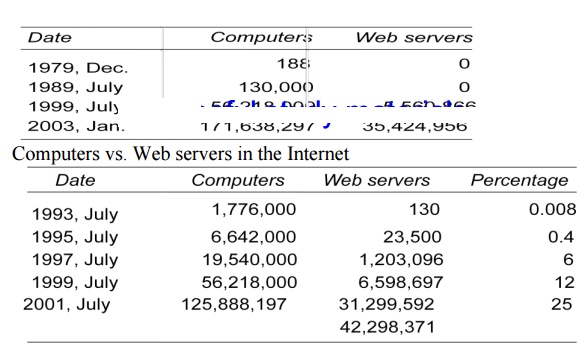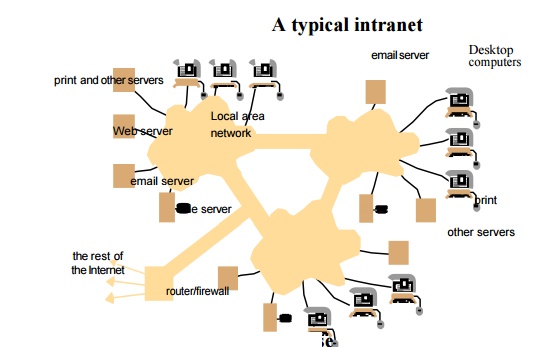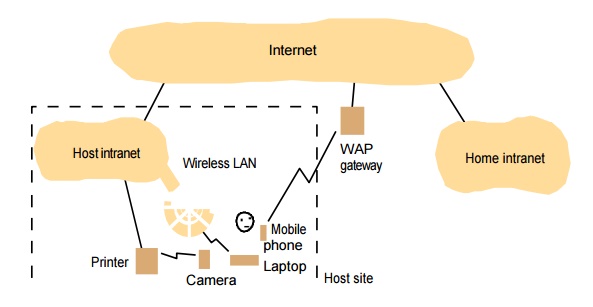Chapter: Distributed Systems : Introduction
Trends in Distributed Systems
TRENDS IN DISTRIBUTED SYSTEMS
Distributed
systems are undergoing a period of significant change and this can be traced
back to a number of influential trends:
o
the emergence of pervasive networking technology;
o
the emergence of ubiquitous computing coupled with
the desire to support user mobility in distributed systems;
o
the increasing demand for multimedia services;
o
the view of distributed systems as a utility.
Internet
The
modern Internet is a vast interconnected collection of computer networks of
many different types, with the range of types increasing all the time and now
including, for example, a wide range of wireless communication technologies
such as WiFi, WiMAX, Bluetooth and third-generation mobile phone networks. The
net result is that networking has become a pervasive resource and devices can
be connected (if desired) at any time and in any place.

The
Internet is also a very large distributed system. It enables users, wherever
they are, to make use of services such as the World Wide Web, email and file
transfer. (Indeed, the Web is sometimes incorrectly equated with the Internet.)
The set of services is open-ended – it can be extended by the addition of
server computers and new types of service. The figure shows a collection of
intranets – subnetworks operated by companies and other organizations and
typically protected by firewalls. The role of a firewall is to protect an intranet by preventing unauthorized
messages from leaving or entering. A firewall is implemented by filtering
incoming and outgoing messages. Filtering might be done by source or
destination, or a firewall might allow only those messages related to email and
web access to pass into or out of the intranet that it protects. Internet
Service Providers (ISPs) are companies that provide broadband links and other
types of connection to individual users and small organizations, enabling them
to access services anywhere in the Internet as well as providing local services
such as email and web
hosting. The
intranets are linked together by backbones. A backbone is a network link with a high transmission capacity,
employing satellite connections, fibre optic cables and other high-bandwidth
circuits

Intranet
o
A portion of the Internet that is separately
administered and has a boundary that can be configured to enforce local
security policies
o
Composed of several LANs linked by backbone
connections
o
Be connected to the Internet via a router

Main issues in the design of components for the use
in intranet
o
File services
o
Firewall
o
The cost of software installation and support
Mobile and ubiquitous computing
Technological
advances in device miniaturization and wireless networking have led
increasingly to the integration of small and portable computing devices into
distributed systems. These devices include:
o
Laptop computers.
o
Handheld devices, including mobile phones, smart
phones, GPS-enabled devices, pagers, personal digital assistants (PDAs), video
cameras and digital cameras.
o
Wearable devices, such as smart watches with
functionality similar to a PDA.
o
Devices embedded in appliances such as washing
machines, hi-fi systems, cars and refrigerators.
The
portability of many of these devices, together with their ability to connect
conveniently to networks in different places, makes mobile computing possible. Mobile computing is the performance of
computing tasks while the user is on the move, or visiting places other than
their usual environment. In mobile computing, users who are away from their
‘home’ intranet (the intranet at work, or their residence) are still provided
with access to resources via the devices they carry with them. They can
continue to access the Internet; they can continue to access resources in their
home intranet; and there is increasing provision for users to utilize resources
such as printers or even sales points that are conveniently nearby as they move
around. The latter is also known as location-aware
or context-aware computing. Mobility
introduces a number of challenges for distributed systems, including the need
to deal with variable connectivity and indeed disconnection, and the need to
maintain operation in the face of device mobility.
Portable and handheld devices in a distributed
system

Ubiquitous computing is the
harnessing of many small, cheap computational devices that are present in users’ physical
environments, including the home, office and even natural settings. The term
‘ubiquitous’ is intended to suggest that small computing devices will
eventually become so pervasive in everyday objects that they are scarcely
noticed. That is, their computational behaviour will be transparently and
intimately tied up with their physical function.
The
presence of computers everywhere only becomes useful when they can communicate
with one another. For example, it may be convenient for users to control their
washing machine or their entertainment system from their phone or a ‘universal
remote control’ device in the home. Equally, the washing machine could notify
the user via a smart badge or phone when the washing is done.
Ubiquitous
and mobile computing overlap, since the mobile user can in principle benefit
from computers that are everywhere. But they are distinct, in general.
Ubiquitous computing could benefit users while they remain in a single
environment such as the home or a hospital. Similarly, mobile computing has
advantages even if it involves only conventional, discrete computers and
devices such as laptops and printers.
Related Topics